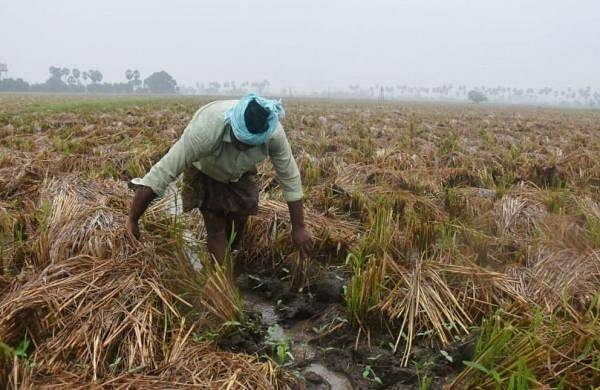
Climate change will cause major changes in Karnataka's agricultural landscape by 2035, with a study indicating a drop in the yield of major crops such as ragi, rice, groundnut, redgram, and soybean, while some crops such as cotton and sugarcane will see an increase in yield, increasing the risk of market glut.
Macro studies have already demonstrated temperature increase of 2 to 3.5 degrees Celsius will result in a loss of up to 25% of net agriculture revenue. However, H S Shivaramu, former director of the Agrometeorology section at the University of Agricultural Sciences-Bengaluru, employed crop simulation models to arrive at Karnataka-specific scenarios in his vulnerability assessment.
The overall crop production in 2035 indicated a 5.6 percent decrease in rice productivity compared to the current yield. Other crops fared worse, with productivity losses of 20.3% for sorghum, 28.9% for soybean, 19.2% for redgram, 12% for ragi, and 9.6% for groundnut.
Because of the moisture-retaining quality of the soil in which they are cultivated, the production of some crops that flourish in a relatively high carbon-dioxide atmosphere will rise. Cotton productivity would increase by 55.6 %, followed by maize (24.5 %), chickpea (13.5%), and sugarcane (6.1%).
“The fact that the production of some crops increases may not be the bright side of the issue,” said Prof Shvaramu, now dean of Kolar's Horticulture College. “A number of issues may arise. As some crops prosper, more farmers may embrace them, resulting in a market glut. We are looking at a future in which diversity of crops is eroding and farmers' coping mechanisms are unable to resist climatic extremes,” he told DH.
The risk to crops was analysed using data on soil properties, crop production (2001 to 2018 data from the Union Agriculture Ministry), climate data (1981-2018) from IMD, and IISc rainfall projections (2021 to 2050), among other materials.
The study has proposed weather-based cropping patterns, strengthening agrometry services, flood adaptation, and more programs to encourage organic farming and conserve soil health, while welcoming the adoption of some existing mitigation measures such as crop diversification, drip irrigation, and groundwater recharging, among others.
















